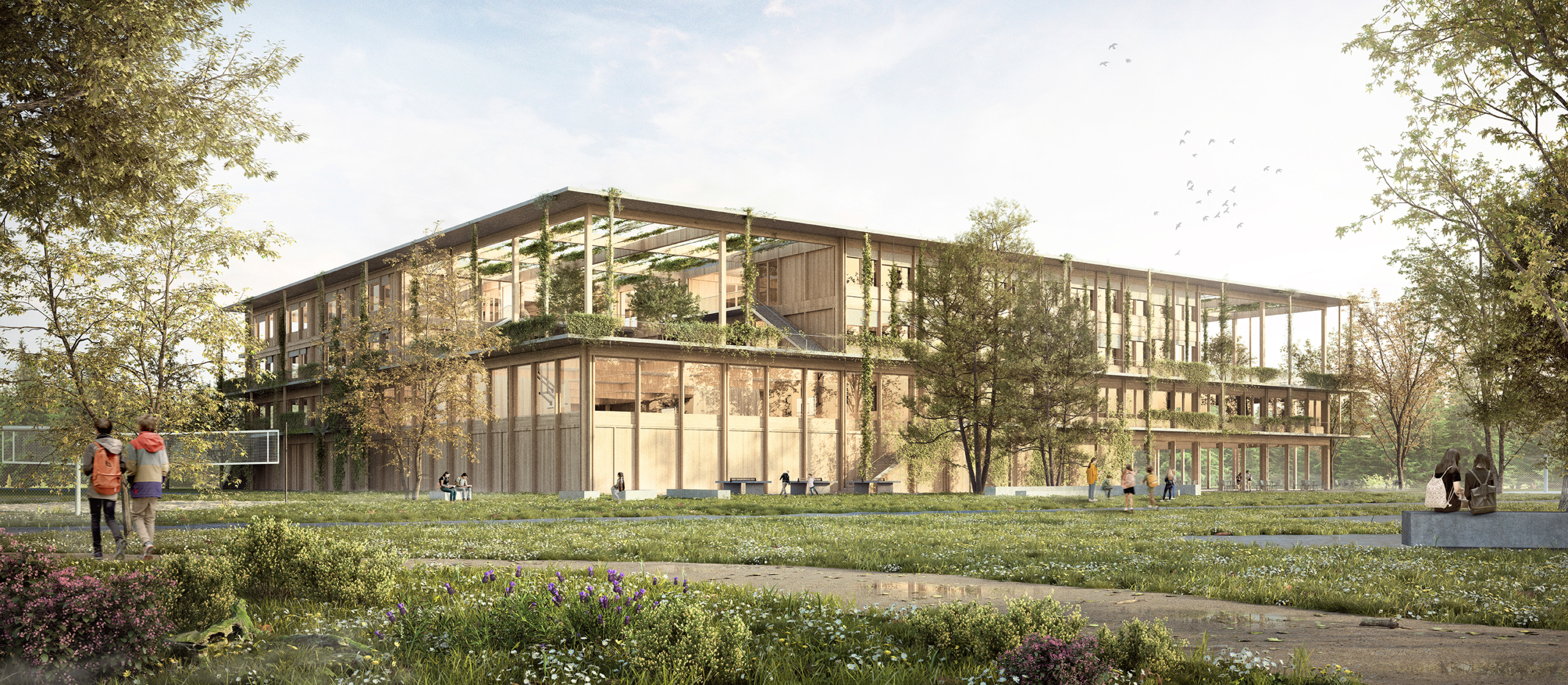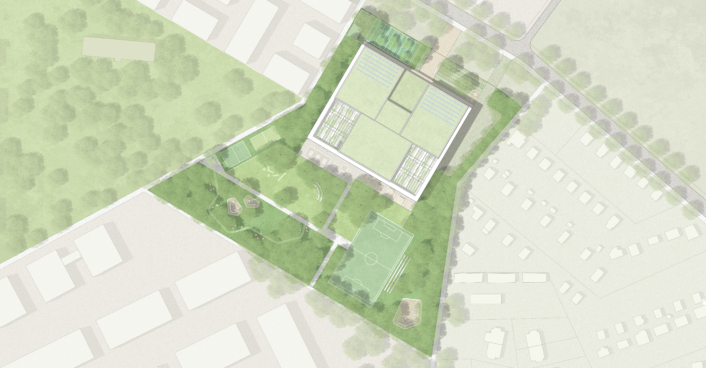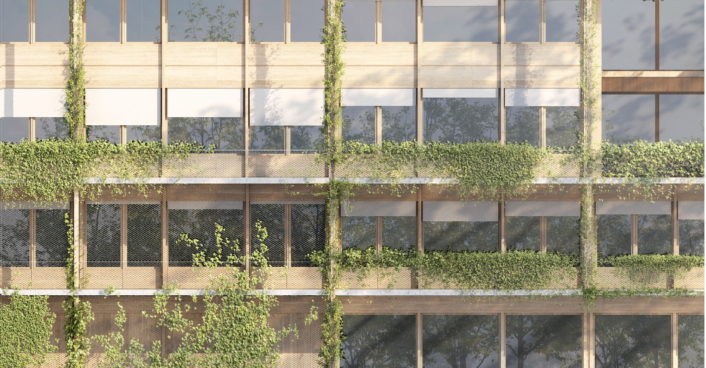
Sustainable architecture - The new Rhenaniastraße secondary school in Berlin as a contribution to the new residential district
3rd place realization competition
The grammar school in Rhenaniastrasse is a central component of the new Wasserstadt-Oberhavel district and plays an important role in its development. In our design, we took care to optimize its functionality and make it sustainable, while the compactness of the building enables efficient use and accessibility.
Sustainable and resource-saving options were prioritized for the building materials. The use of wood in combination with wood-concrete composite ceilings significantly reduces CO2 emissions compared to solid materials. Additional measures such as green roofs, photovoltaic systems for electricity generation and solar thermal energy for water heating further contribute to sustainability in the design.
The school was integrated into the urban context, with the façade design varying depending on its orientation and function.
The building forms a harmonious transition between urban and suburban surroundings. Public and communal areas are located on the first floor. On the second floor there are specialist rooms and a library, while the upper floors are reserved for classrooms.
The sports hall is seamlessly integrated into the building and can be used for school sports as well as independently outside school hours. The energy concept includes natural ventilation, photovoltaics, solar thermal energy and green roofs, which also results in an overall sustainable and energy-efficient solution.
The plans envisage the building being certified to silver or a higher level according to the BNB standard, which underlines the feasibility of the sustainable concept.
Task
- Realization competition with subsequent VgV Berlin | 2023
- The competition included the planning of a new 4-course grammar school with a sports hall consisting of three hall sections with a gallery as well as leisure and recreation areas. This project is part of the Berlin school construction offensive and is being realized on a 19,759 m² site in the Haselhorst district of Berlin-Spandau. The planned gross floor area is around 11,833 m², and the secondary school will provide space for 664 pupils. The building should take into account the functional aspects of individual learning and team houses as well as offering a flexible, possibly modular construction concept. The sustainability criteria of the "Sustainable Building" (BNB) assessment system for educational buildings are taken into account during planning, with the aim of achieving the silver standard. The construction phase is planned for the third quarter of 2025 and the school is scheduled to open for the 2028/29 school year.
SHA Scheffler Helbich Architects | Architecture
Author: Marc Horstmeier,GINA Barcelona Architects | Architecture
Author: Roger Pernas, Albert BritoEmployees: Laura Spickenheier (SHA), Paula Poblet (GINA)
Curious?
Your contact person will be happy to help you.




